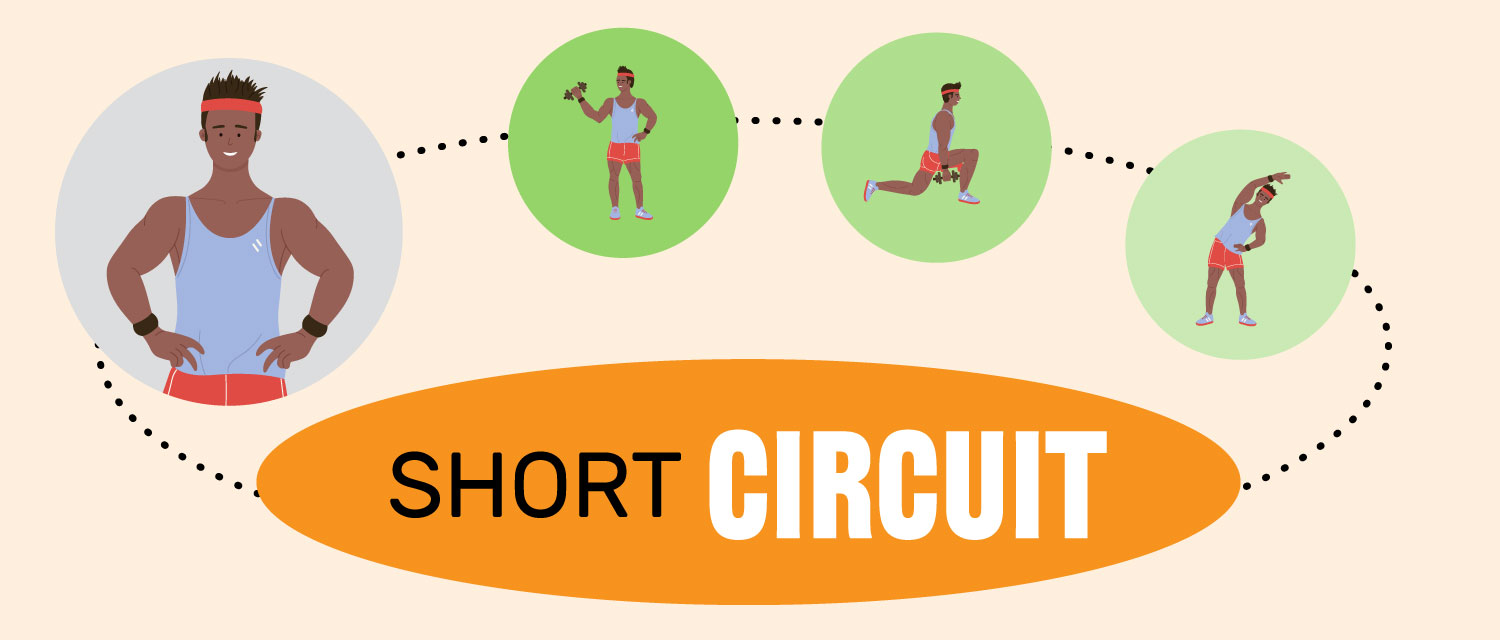
Are you getting bored with your current workout? Circuit training may be a good option for you. In a circuit training workout, you’ll move briskly between different “stations” that focus on different muscle groups, doing 10-25 reps or performing a particular movement for 30-90 seconds.
For example, you might do 10-25 bicep curls, then 10-25 lunges, and then move to a 45-second front plank.
A circuit training workout can last anywhere from fifteen minutes to an hour, depending on your fitness and goals.
While you can do circuit training in a gym with weight machines and dumbbells, you don’t always need gym equipment to do it – you can do exercises that rely primarily on your own body weight. Because you are constantly moving from exercise to exercise, it is excellent for your cardiovascular health. Depending on the exercises you do, you can customize a circuit to your specific needs, whether those be strength, weight loss, agility, or endurance.
Circuit training is very flexible, but it is not for everyone. If you have arthritis, be sure to choose low-impact exercises (avoid jumping jacks, for instance). If you have a back or knee injury, wait to circuit train until you are healed. Not sure where to start? Check HERE for an introductory circuit, complete with instructions for each exercise.
RESOURCES
9 Science-Backed Benefits of Circuit Training (healthline.com)
Circuit Training: What You Do, Benefits, and More (webmd.com)
What is Circuit Training? | Examples of Circuit Training (stretchcoach.com)










